Invented Tools and Moving Lines
Using everyday objects, staff members invented a variety of tools that guests recently tested out in an experimental Everyday Art Project. Guests were invited to explore black paint and mark-making tools to create lines that moved across the page.
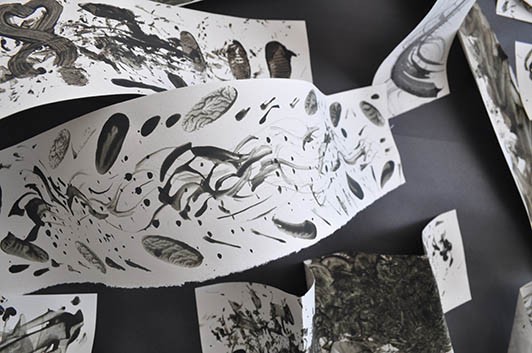
Below are a small sample of some of the tools with a description of each authored by each of the inventors. We hope this inspires you to create your own tools and experiment at home with mark-making!
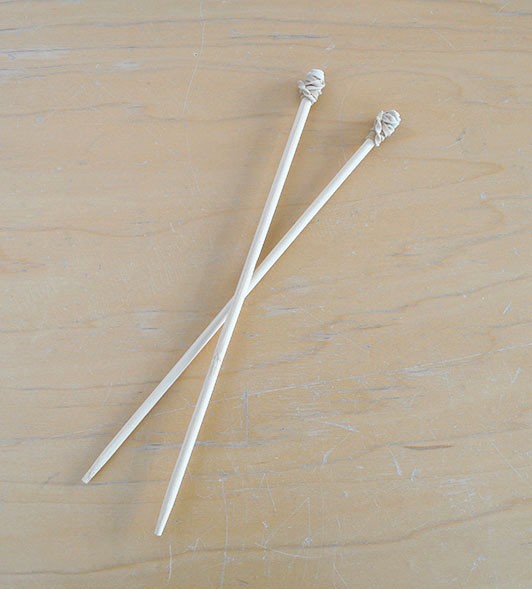
“I really liked the texture of the rubber bands, and I was curious about how that rubbery texture could be used on the drawing part of the tool, not just as a connector piece to attach things. I wrapped the rubber bands around the tip of a chopstick to create lots of nice bumpy texture. The tool ends up looking and feeling like a honey dipper.” –Ana L.
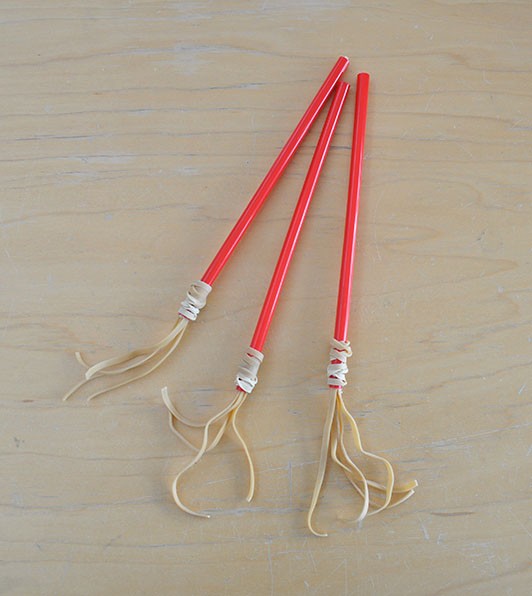
“I, like Ana, was inspired by the texture and the flexibility of the rubber bands. When brainstorming ideas for mark-making tools, I thought about the bristles of paint brushes. I decided to experiment with materials and replace what acts as the bristles with cut-up pieces of rubber bands. I found that a grouping of four or five pieces attached to a straw created a tool that offered a variety of marks through various movements.” –Helen A.
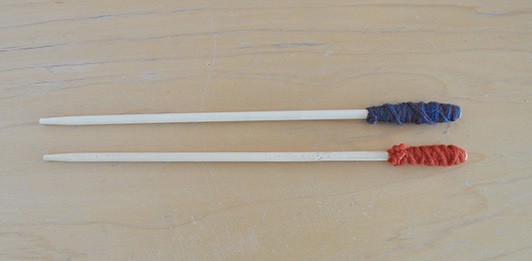
“I created my third tool by wrapping yarn around the end of a stick. A lot of these ended up resembling honey spoons. The yarn wrapped around a stick created a more solid tool with which to explore the paint and paper. It was less floppy than the ribbon or feathers, but still offered interesting texture to play around with. I also imagined the possibility of using the end of the stick to make dots.” –Carole R.
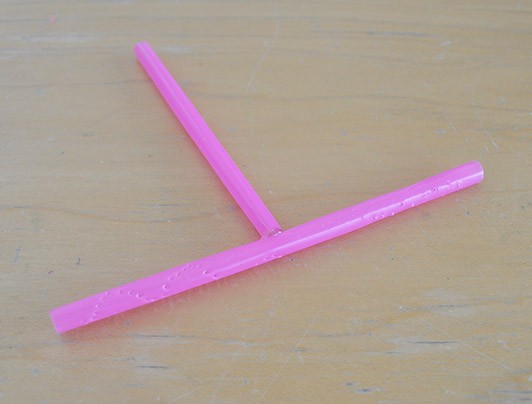
“This tool was made using a book binding needle and X-Acto knife to cut shapes on a plastic straw. A second straw was attached with hot glue to make a handle. The marks on the straw can create unique patterns by stamping.” –Lila T.
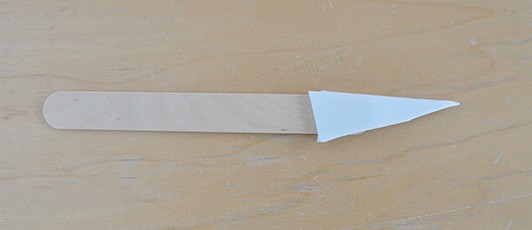
“This tool uses two sides of sticky-backed foam stuck to either side of a popsicle stick. The foam pieces are pointy and flexible, almost like a paintbrush or a calligraphy brush. You can hold this tool close to the foam or at the very end— each way will make a different kind of line in the ink.” –Ana L.
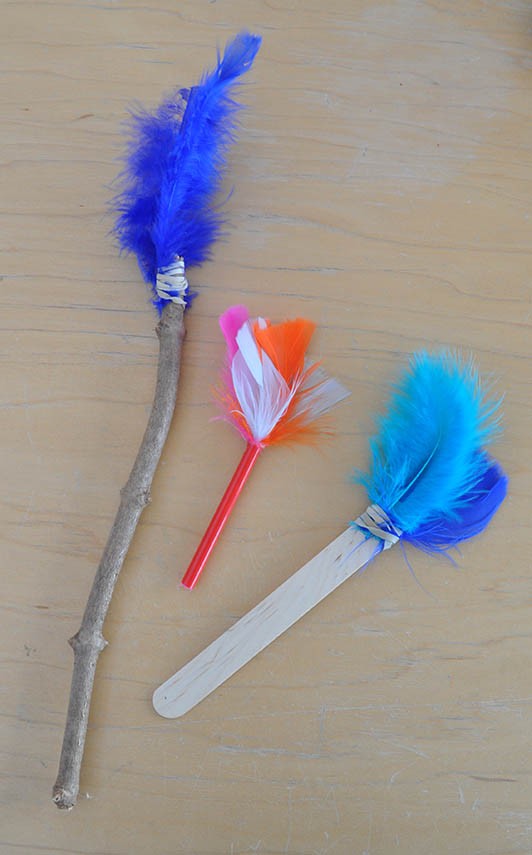
“Attaching feathers to sticks felt like a fun tool. The feathers are colorful and fuzzy and are an interesting texture to explore. The sticks were fun because they added a nature element to the project.” –Carole R.
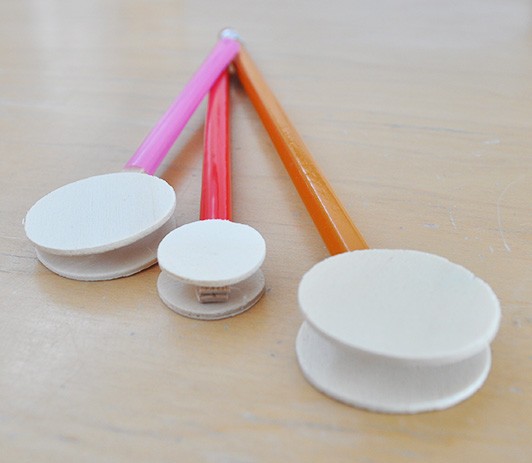
“I found that attaching two identical wooden shapes to the end of wooden coffee stirrers resulted in a variety of available lines and marks. Straws were used to cover the stirrers in order to make the tool easier to hold and to add a colorful quality.” –Anton K.
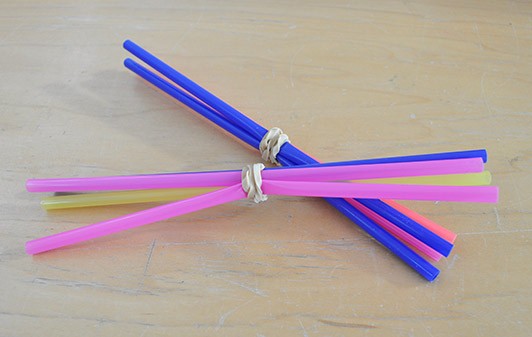
“I found that by wrapping a rubber band around a group of four straws, I could make a tool that was both stiff and a bit bendy, depending on how you hold it.” –Ana L.
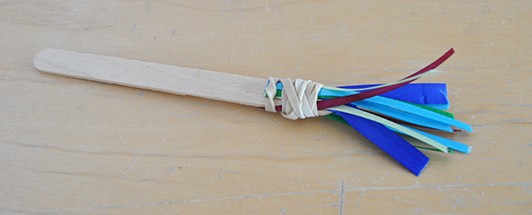
“When I decided to attach bits of ribbon to popsicle sticks with rubber bands, I was imagining creating an alternative paintbrush. The colorful and floppy ribbons added a silly, whimsical element to a familiar tool. I thought that the rubber band part could also be used as a textured painting tool.” –Carole R.
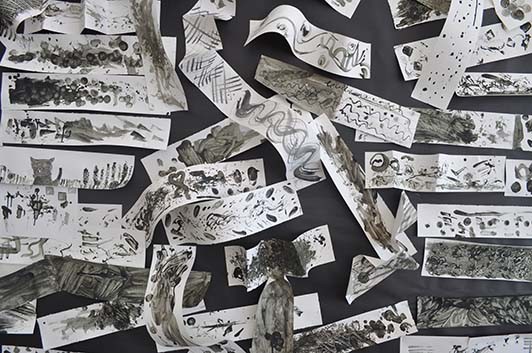
As one guest aptly put it, experimenting with the tools “kind of makes you think that maybe paintbrushes aren’t the best tools to paint with!” We hope this blog posts helps you see everyday objects as items with potential for painting and exploration.

